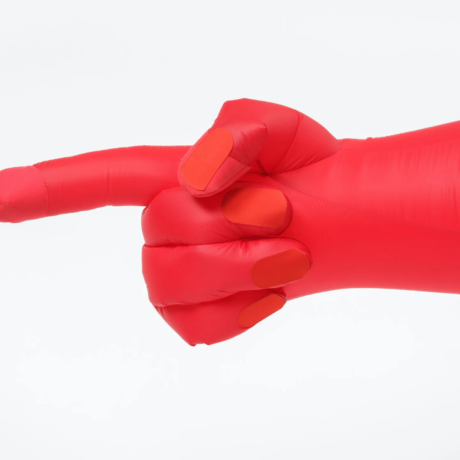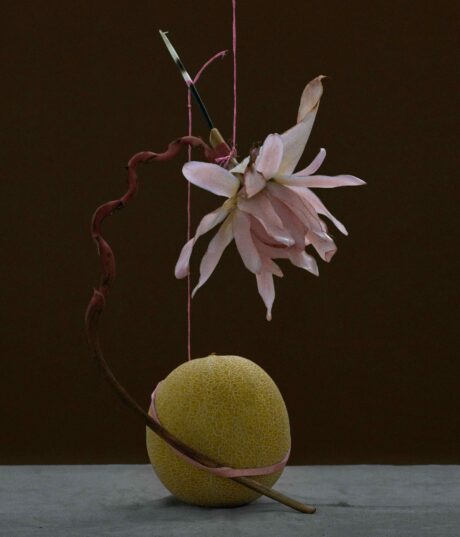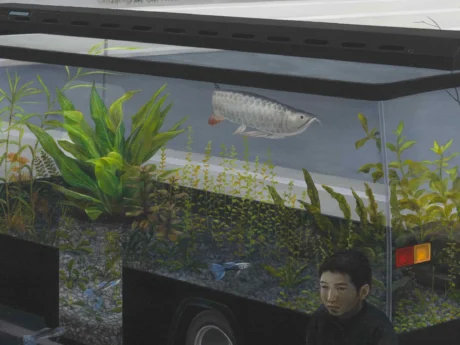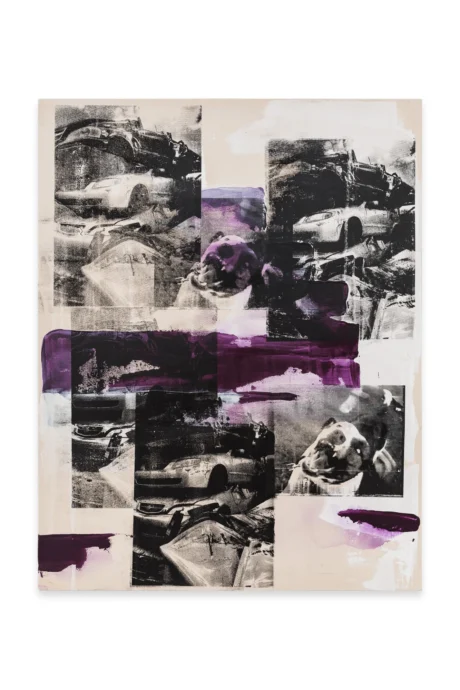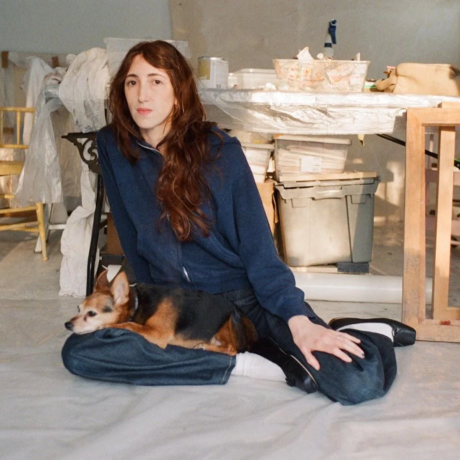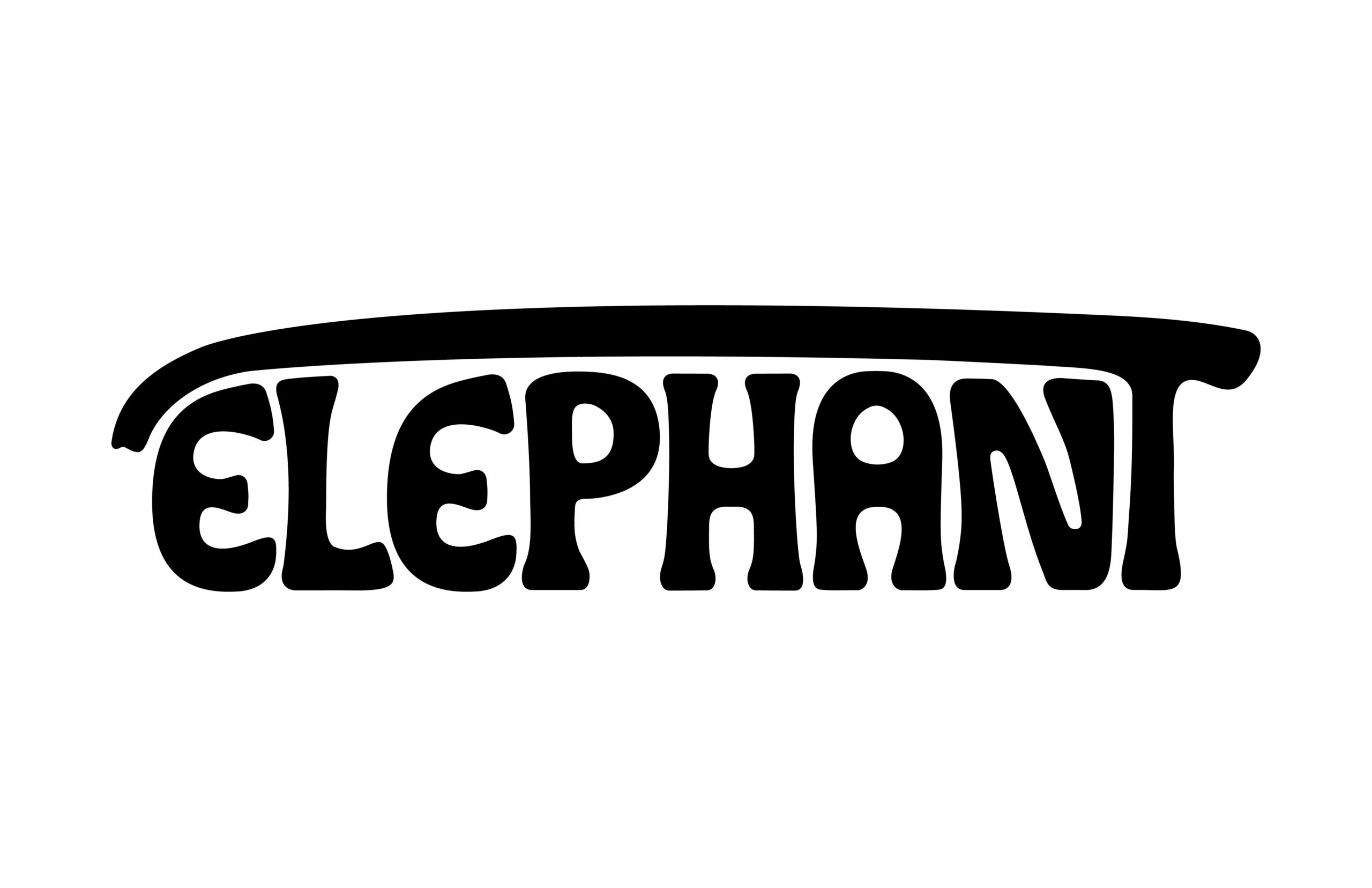Elephant explores Gucci: Bamboo Encounters at the Chiostri di San Simpliciano, an exhibition celebrating the House’s storied history with bamboo and the contemporary artists and designers reimagining the material during Milan Design Week.
On a recent trip to Hong Kong for Art Basel, I was introduced to the concept of bamboo scaffolding. It may sound whimsical – visually, it certainly is – but despite its delicate appearance, the ancient technique has long been the backbone of construction across Asia. Entire skylines have risen on its flexible strength – but bamboo also holds a storied past in the legacy of Gucci, the iconic fashion house.
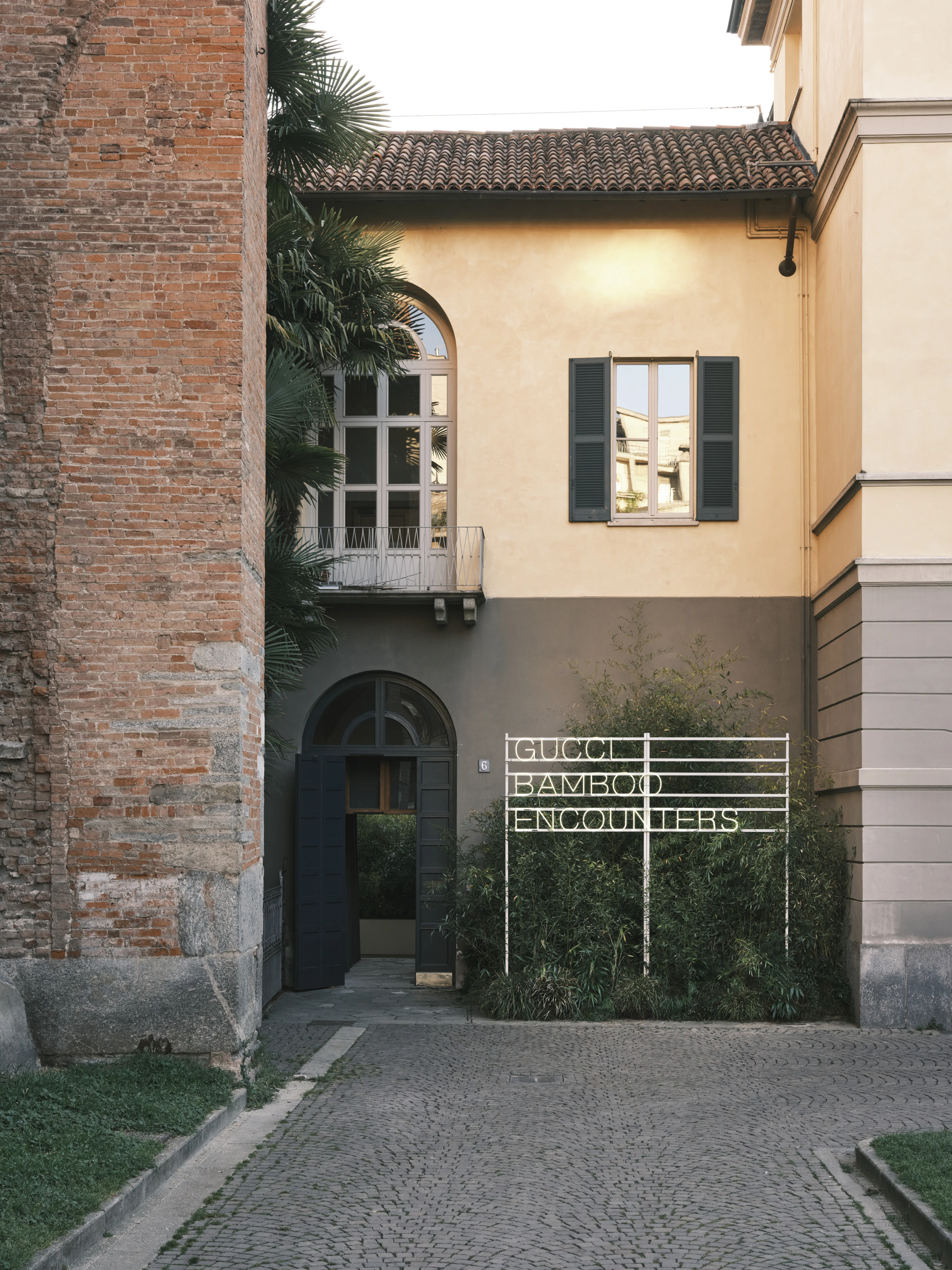
The House’s relationship with bamboo began almost eight decades ago with the creation of the Gucci Bamboo 1947 bag, a piece which has remained an enduring symbol of the House. Its defining feature, a bamboo handle, is a charming reference to the bamboo walking sticks once favoured by Guccio Gucci’s son. Gucci recently explored its connection to the material in the Shanghai exhibition Bamboo: Decoding an Icon. Now, during Milan Design Week, the dialogue continues with Gucci: Bamboo Encounters. Held at the serene Chiostri di San Simpliciano, the exhibition brings together a group of contemporary designers, each reconsidering the material’s form, function, and symbolism for a new era.

The Swedish-Chilean artist Anton Alvarez has focused on bamboo’s form in his sculpture titled 1802251226, which can be found in the clearing of the exhibition’s bamboo garden. Also a functional waterfall, the structure rises from the ground, its form resembling a jet of water as it rises towards the sky. The artist sought to reference the abilities of natural resources to defy structural limits: “This work is a tribute to the essence of bamboo, and to water, the driving force of all nature. It celebrates bamboo’s ability to defy circumstances, pushing through, growing upwards and in between, providing both stability and life itself. Bamboo is stable yet fleeting, restrained yet untamed, reliable yet wild. It embodies the delicate balance between control and chaos, much like my own creative process.”

Meanwhile, London-based Palestinian artist Dima Srouji’s Hybrid Exhalations tells a different story about bamboo’s materiality. Srouji created sculptural baskets which combine woven bamboo with glass vessels. While the artist spent weeks searching for unique bamboo baskets made by unknown masters around the world, the glass was created entirely in anticipation of what would be found. Hand-blown by the Twam family of master artisans in Jaba’ – a historic Palestinian village tucked between Ramallah and Jerusalem – the glass was crafted without ever having seen the baskets it would eventually inhabit. The final delicate yet grounded hybrids honour the anonymous bamboo artists, whose craft, skill, and legacy are now forever interwoven with Srouji’s own.

Kite Club – the Instagram-account-turned-collective comprising Dutch product and textile designer Bertjan Pot and still-life photographers Liesbeth Abbenes and Maurice Scheltens – have produced a sculpture titled Thank You, Bamboo which reflects their love of kites and references the craft’s rich history and global tradition. In their commission for Gucci: Bamboo Encounters, Kite Club reference the bamboo which was used by kite makers in the craft’s development. Their sculpture is a tribute to bamboo which blends contemporary materials like ripstop nylon, plastic, and tape with bamboo. It celebrates the joy of making and flying kites, merging the classic with the contemporary: “Now, we use carbon and fiberglass rods and tubes for frames that were once meticulously carved from bamboo. Paper is replaced by synthetic materials like plastic and ripstop nylon, designed to withstand stronger winds and rain. But none of these innovations would have been possible if people hadn’t originally crafted kites from bamboo.” While the sculpture’s ripstop nylon kites act as canvases for expressing ideas about bamboo, those made from tape and plastic demonstrate that anyone can build a kite using household materials. To solve the challenge of the windless Chiostri di San Simpliciano courtyard, Kite Club devised a kite-flying machine, whose long, revolving bamboo poles generate the airflow needed to lift the kites into flight.
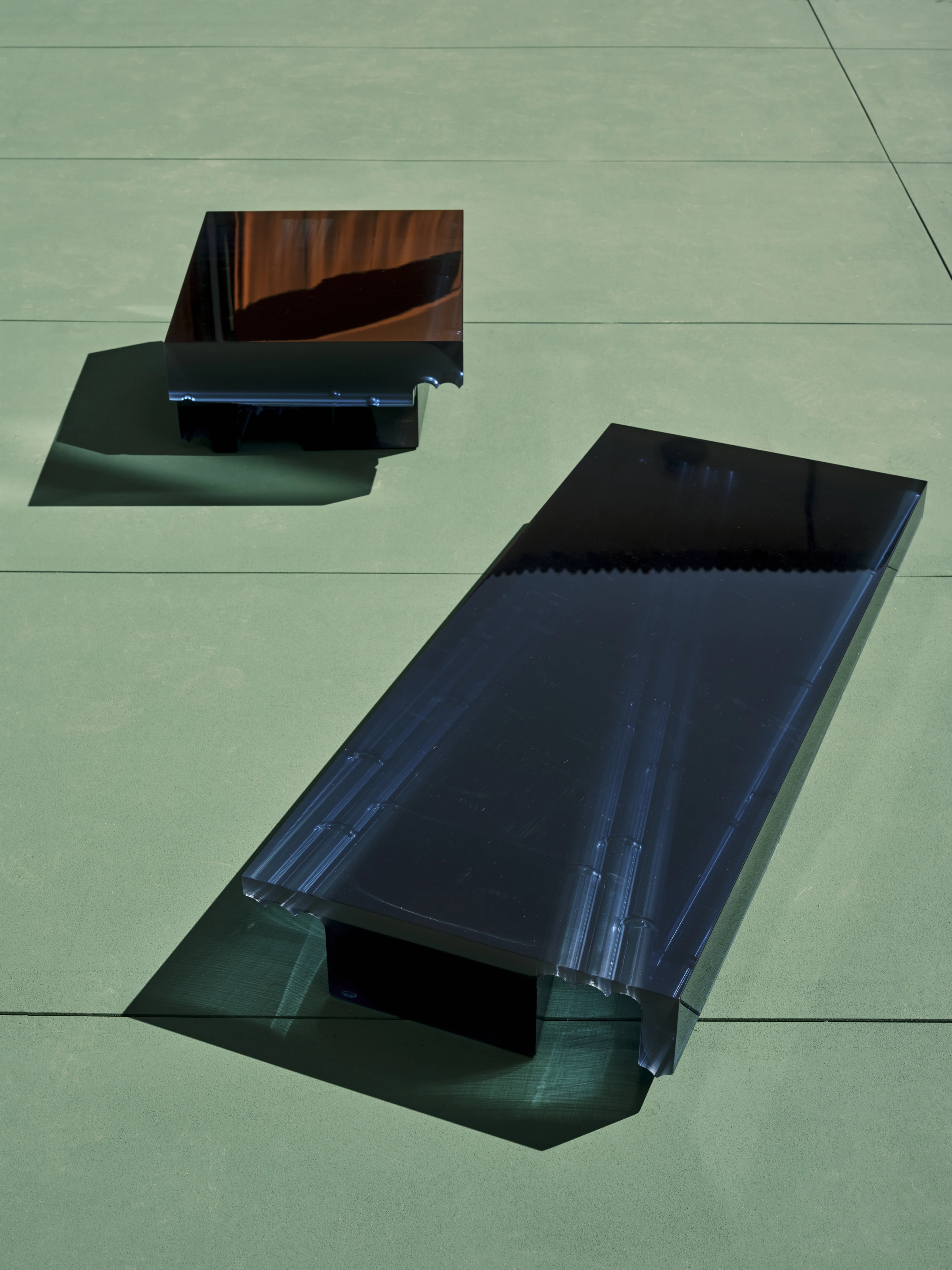
Where Kite Club’s project focuses on the practical use of bamboo in kite making, Laurids Gallée, an Austrian designer based in Rotterdam, focuses on the use of bamboo in scaffolding and support sculptures. His commissioned sculpture for the exhibition, aptly titled Scaffolding, focuses on the duality of the material in its embodiment of both supportiveness and elegance. “The resulting project feels, to me, like an X-ray of bamboo, or a frozen moment of scaffolding – capturing its strength and order while leaving the actual bamboo absent. The calm blue colour enhances this feeling, while the intersecting strands highlight how we’ve used bamboo structurally and historically. In the end, I hope the work invites people to step closer, to explore what’s happening inside these large, quiet volumes.”
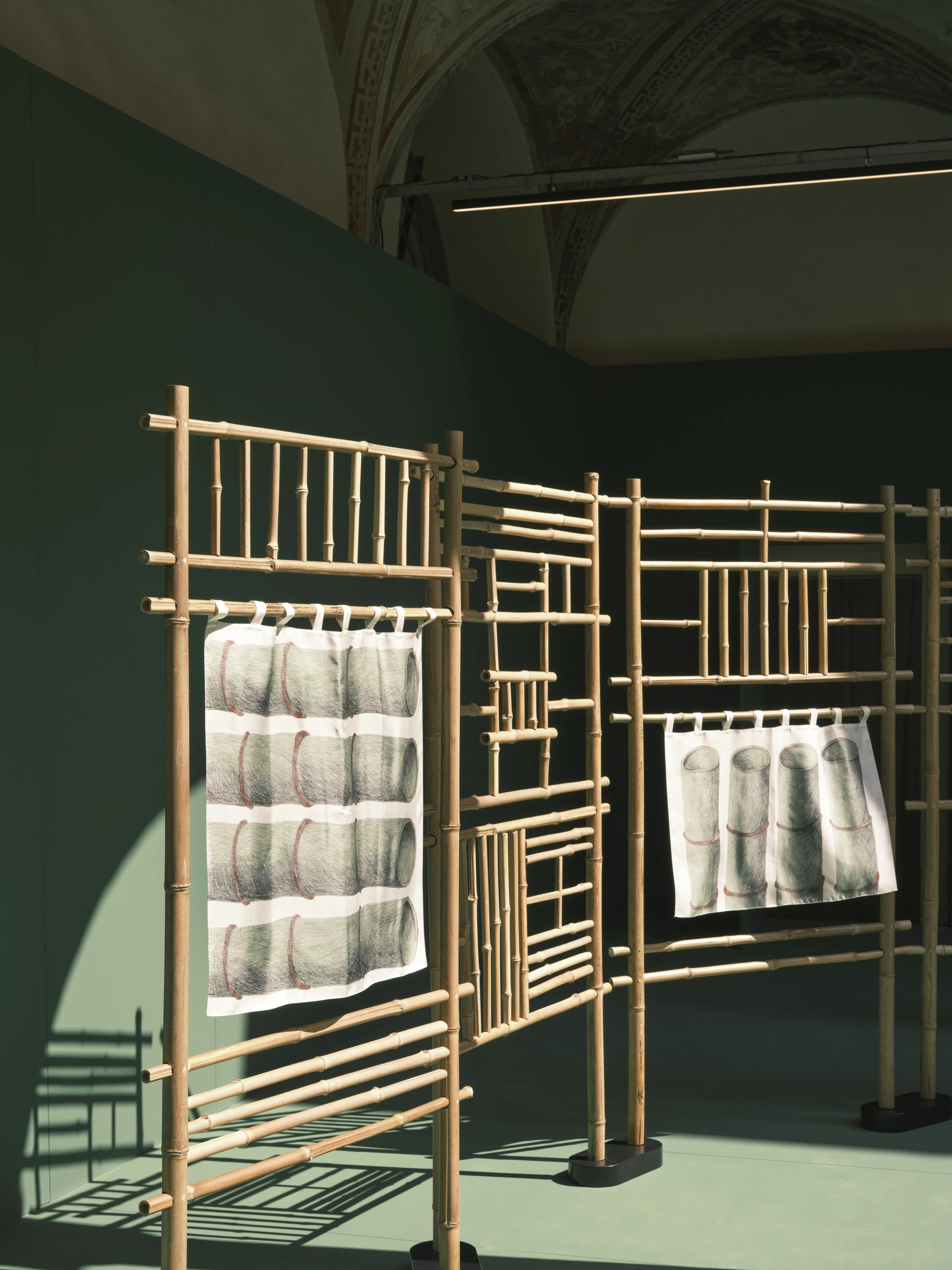
Nathalie du Pasquier is a French artist who moved to Milan in 1979, where she began working as a textile designer. A founding member of the Memphis Group, she left design in 1987 to dedicate herself to painting. For her commission for Gucci: Bamboo Encounters, du Pasquier created PASSAVENTO – a work inspired by traditional Asian furniture design. The piece reimagines bamboo through the form of a folding screen, elegantly framing silk prints. Though it is her first time working with bamboo, and du Pasquier spoke of the unexpected emotion generated through the encounter of bamboo and printed silk: “An emotion coming from the rough and rigid finish of the structure for the screens, and the bamboo screens being rooted in heavy metal “shoes” themselves – as much as the precious printed silk, which is supposed to softly move in the air. If it works, then it will give birth to a lyrical and aesthetic emotion for visitors to enjoy, and nothing more than that!”
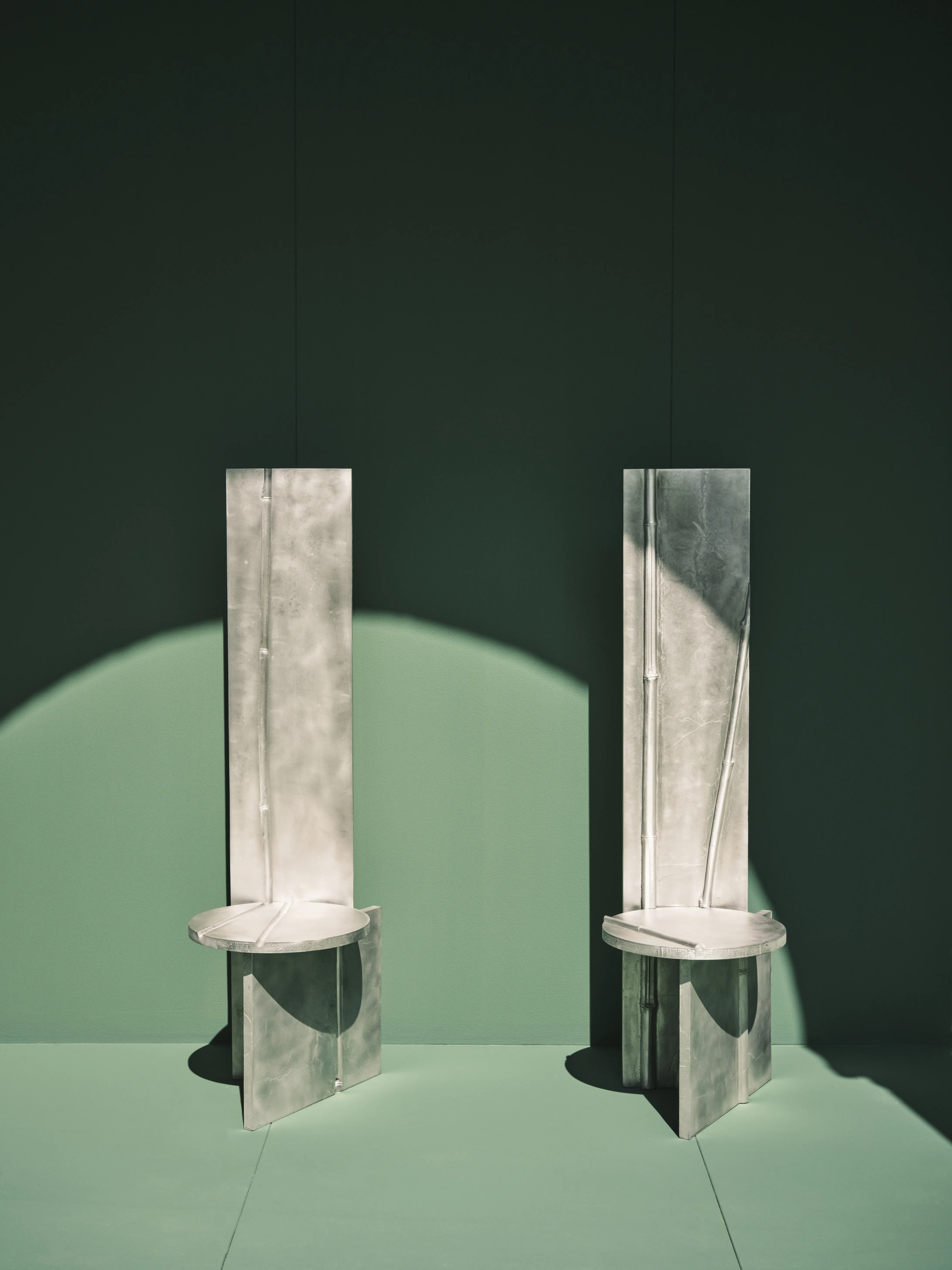
In Engraved, Sisan Lee – the Seoul-based designer and artist specialising in interior design, furniture, and sculpture – presents a modern take on bamboo whilst incorporating traditional Korean aesthetics, connecting bamboo imagery with the profound sense of space in ink-wash paintings and the restrained beauty of Joseon porcelain. Believing that Korean aesthetics are realised not through addition but through subtraction, Lee chose to express bamboo metaphorically, using relief and intaglio techniques rather than directly rendering its form. Engraved was created using aluminium casting, a technique frequently employed in Lee’s work. As molten aluminium is poured into a sand mold, it gradually forms a natural and primitive texture.
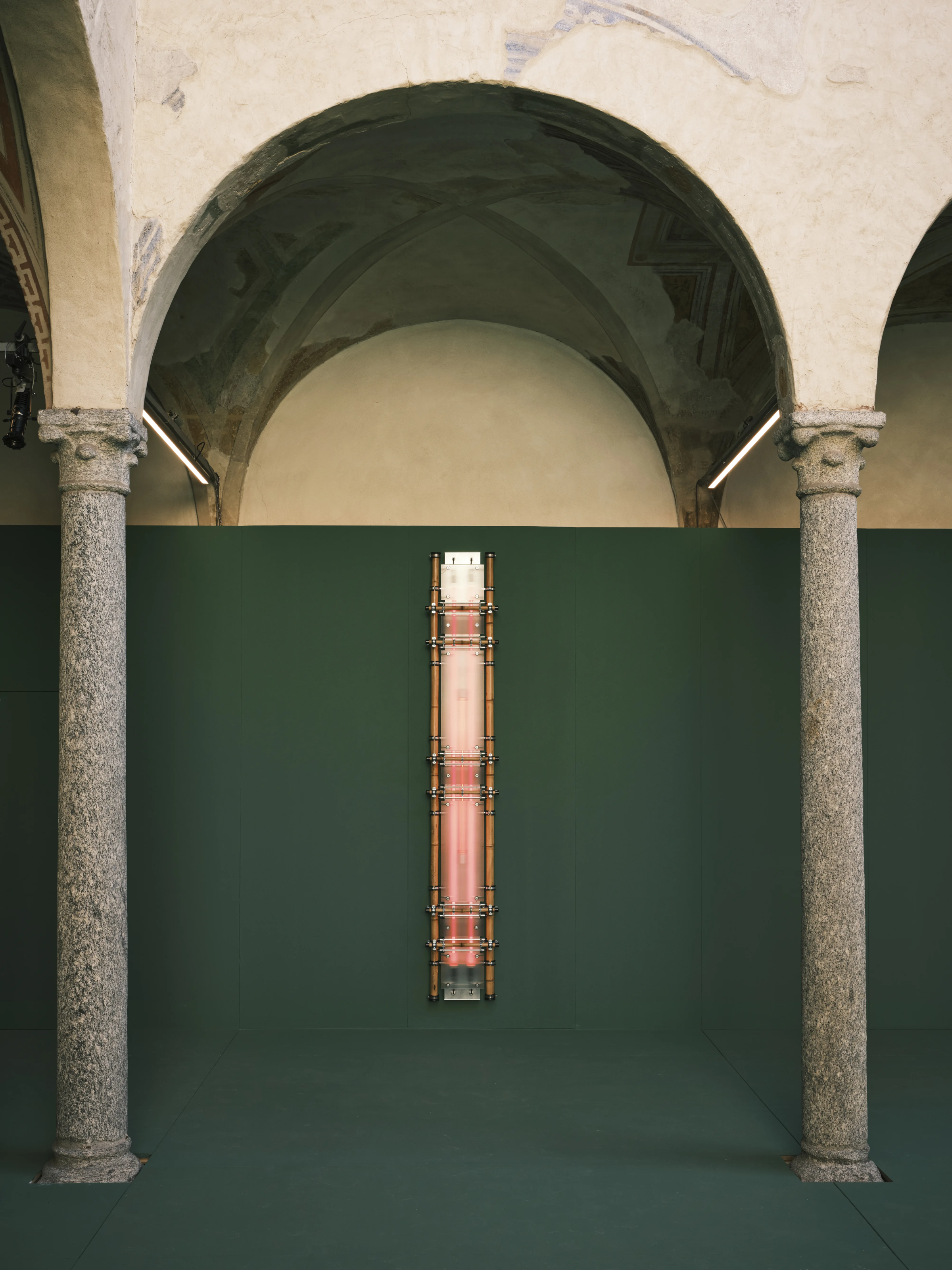
the back studio is a duo composed of artists and designers Eugenio Rossi and Yaazd Contractor. Based between Turin and Mumbai, they blend industrial construction with hand-blown neon creations to produce sculptural and functional assemblages. the back studio’s latest work for Gucci, bamboo assemblage n.1, explores the intersection of bamboo and light, merging traditional craftsmanship with modern innovation. Bamboo, renowned for strength-to-weight ratio and versatility, serves as the structural foundation for this installation. The contrast of the natural material and the precision of cold cathode glass and high-tech hardware, the piece introduces a dynamic tension between tradition and modernity.
Gucci: Bamboo Encounters is on view now at the the Chiostri di San Simpliciano and will run until April 13th.
Words by Emily Burke
